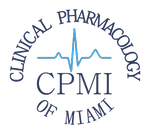Navigating Post-Operative Pain in Hernia Surgery: Insights from Clinical Trials
Hernia surgery is a common procedure designed to repair a defect in the abdominal wall or groin. While it is generally effective in alleviating symptoms and improving quality of life, managing post-operative pain remains a significant concern for both patients and healthcare providers. In recent years, clinical trials have explored various approaches to better manage this pain, aiming to enhance recovery and patient comfort. This blog post delves into the latest findings from these clinical trials and their implications for post-operative pain management.
Understanding Post-Operative Pain in Hernia Surgery
Post-operative pain is a common issue follow
ing hernia surgery, which can significantly impact a patient’s recovery experience. Pain levels can vary based on several factors, including the type of hernia repair (open vs. laparoscopic), the surgical approach used, and individual patient factors. Effective pain management is crucial for:
-
- Comfort: Reducing pain improves overall patient comfort and well-being.
-
- Mobility: Adequate pain control facilitates early mobilization, which is important for a speedy recovery.
-
- Complication Prevention: Proper pain management can help reduce the risk of complications, such as pneumonia or blood clots, associated with prolonged immobility.
Recent Advances in Pain Management: Insights from Clinical Trials
-
- Multimodal Analgesia
One of the key findings from recent clinical trials is the efficacy of multimodal analgesia, which involves using a combination of pain relief methods. Studies have shown that combining medications with different mechanisms of action can provide better pain control and reduce the reliance on opioids. Common components of multim
odal analgesia include:
-
- Local Anesthetics: The use of local anesthetic agents, such as bupivacaine, administered at the surgical site or via nerve blocks, has been shown to reduce post-operative pain and opioid consumption.
-
- NSAIDs: Nonsteroidal anti-inflammatory drugs (NSAIDs), like ibuprofen, help in managing inflammation and pain. Clinical trials indicate that NSAIDs can be effective when used alongside other analgesic methods.
-
- Acetaminophen: Acetaminophen is another component that can contribute to pain relief, often used in combination with NSAIDs for enhanced effect.
-
- Enhanced Recovery After Surgery (ERAS) Protocols
ERAS protocols, which focus on optimizing the surgical and recovery process, have been the subject of numerous studies. These protocols aim to minimize the stress response to surgery, improve pain management, and enhance recovery. Key elements include:
-
- Pre-Operative Education: Educating patients about pain management strategies and setting realistic expectations for recovery can improve pain outcomes.
-
- Optimized Anesthesia Techniques: The use of techniques such as pre-operative nerve blocks and reduced use of opioids during surgery has been associated with better pain control.
-
- Post-Operative Care: Early mobilization, balanced fluid management, and targeted pain relief strategies contribute to improved recovery times and reduced pain levels.
-
- Novel Analgesic Agents
Clinical trials have explored new analgesic agents and techniques to manage post-operative pain more effectively. Some promising developments include:
-
- Long-Acting Local Anesthetics: Innovations in local anesthetics, such as liposomal bupivacaine, provide extended pain relief and reduce the need for additional analgesics.
-
- Nerve Blocks and Infusions: Continuous peripheral nerve blocks or infusions of local anesthetics can offer sustained pain relief with fewer systemic side effects.
-
- Patient-Controlled Analgesia (PCA)
Patient-contr
olled analgesia (PCA) allows patients to manage their pain by self-administering prescribed doses of pain medication, usually opioids, through a pump. Clinical trials suggest that PCA can offer more personalized pain management and reduce overall opioid consumption. However, the effectiveness and safety of PCA can vary, and its use should be tailored to individual patient needs.
Implications for Patients and Healthcare Providers
The advancements in post-operative pain management highlighted by recent clinical trials offer several benefits:
-
- Improved Patient Experience: By utilizing a combination of analgesic techniques and protocols, patients can experience less pain, leading to a more comfortable recovery.
-
- Reduced Opioid Use: Multimodal approaches and novel agents help in reducing reliance on opioids, which can mitigate the risk of opioid-related side effects and complications.
-
- Enhanced Recovery: Effective pain management supports quicker recovery and better overall surgical outcomes.
Healthcare providers should stay informed about the latest research and integrate evidence-based pain management strategies into their practice. For patients, understanding these options and discussing them with their surgical team can lead to a more informed and comfortable recovery process.
Conclusion
Post-operative pain management in hernia surgery continues to evolve, driven by research and clinical trials. By incorporating multimodal analgesia, ERAS protocols, and novel analgesic agents, the aim is to provide effective pain relief while minimizing the use of opioids. Both patients and healthcare providers benefit from these advancements, which contribute to a smoother and more efficient recovery. If you’re preparing for hernia surgery, be sure to discuss pain management options with your surgical team to tailor a plan that meets your specific needs.





